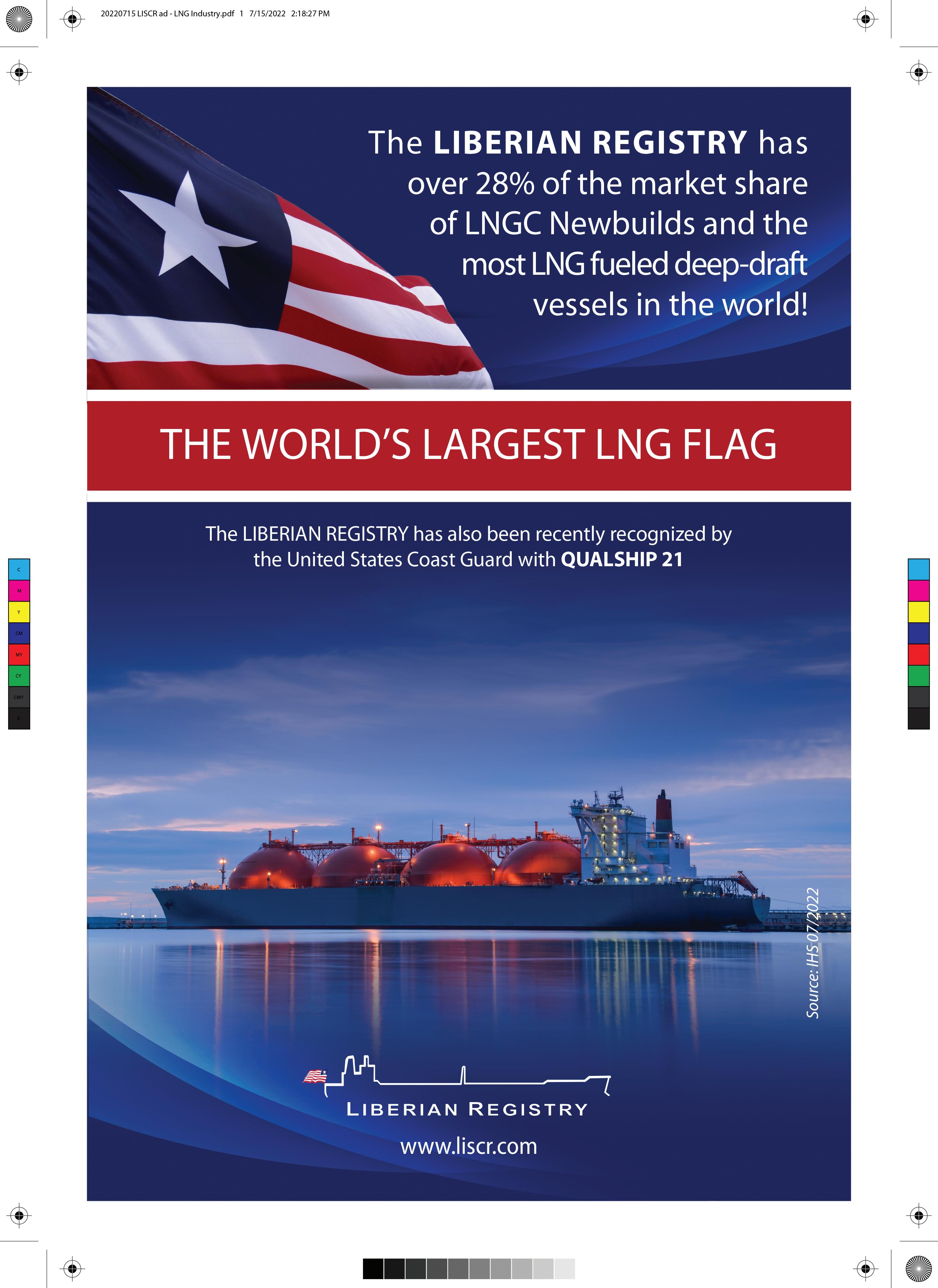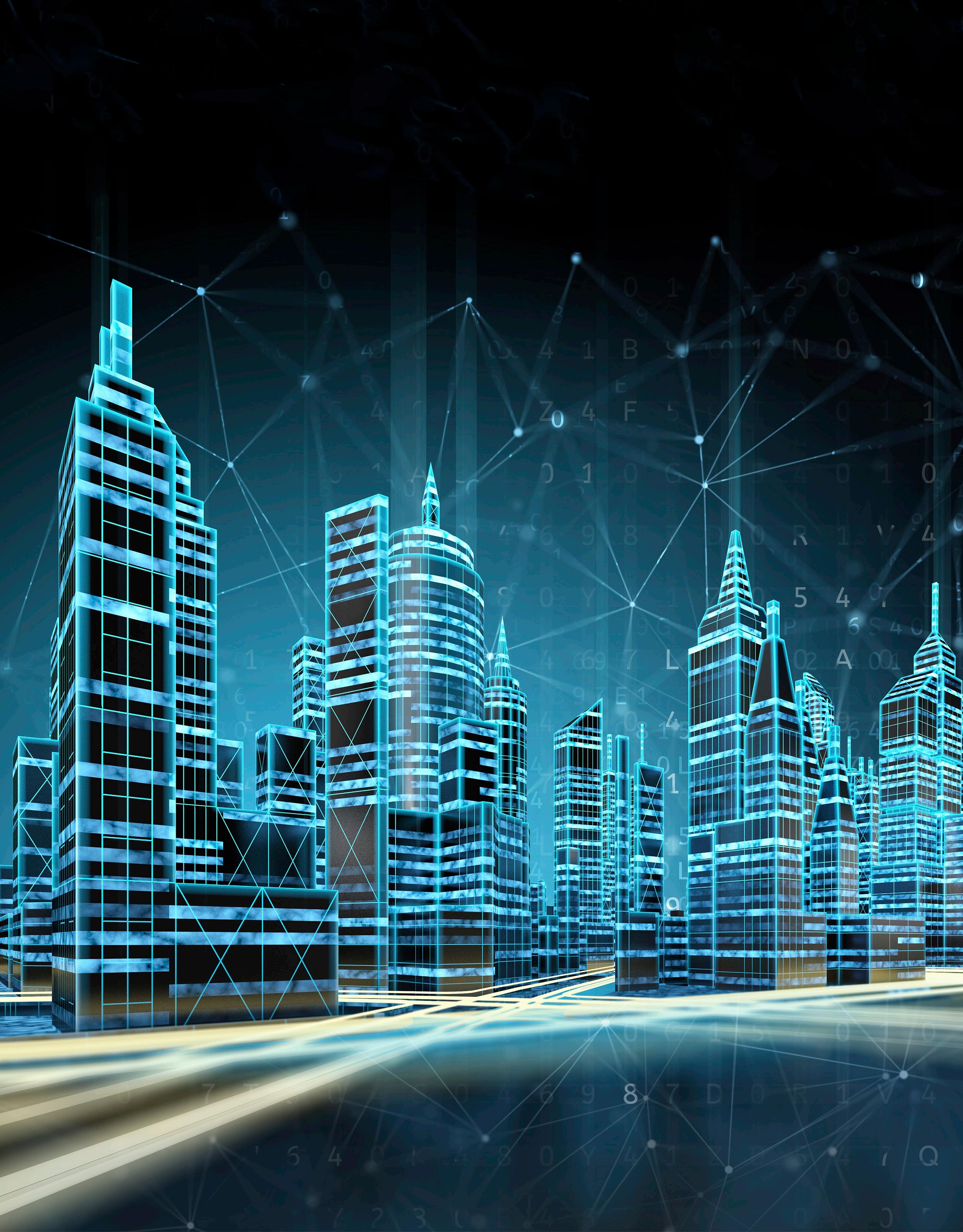
15 minute read
New markets on the block
Karthik Sathyamoorthy, AG&P LNG Terminals & Logistics, Singapore, explains how downstream gas demand is being unlocked in new and emerging markets, and how factors such as the energy transition and current geopolitics are influencing the shift to LNG.
he energy industry is at a revolutionary point in ensuring the efficient mobility of LNG and energy security. LNG is an ideal energy alternative to help reduce greenhouse gas (GHG) emissions and bridge the gap between more harmful fossil-based fuels and future sustainable technologies such as hydrogen. It is a sustainable and affordable way of meeting the power needs of developing countries while renewables continue to scale up to required levels. In this way, it can serve as a backbone
of stable energy production while markets build their investments in renewables and a reliable base to build a long-term hybrid solution for cleaner power. In the backdrop of these benefits of using LNG as energy, new demand centres are emerging that are challenging the traditional markets of Asia, Europe, and North America. The advent of flexible and scalable regasification technology has made it possible for such emerging markets to look for LNG imports, which were hitherto ignored, as it could not justify import facilities for having small and niche pockets of demand. Countries in Sub-Saharan Africa and Asia are embracing regasification and modular technologies that enable economical fit-for-purpose supply and distribution solutions and accelerate their transition to LNG.
Outlook for global LNG demand
There has been a spike in LNG spot prices over the last couple of months that is mostly driven by geopolitical issues associated with Ukraine and concerted efforts from various governments to push cleaner energy. As a result of this, there is an evident increase in LNG demand and price in the short-term. However, longer-term curves on LNG prices are quite stable and reflective of the anticipated increase in LNG supply from Qatar, the US, Australia, United Arab Emirates, and additional capacities uncovered across the globe that will enter into the LNG system. There has also been a large number and diversity of LNG suppliers emerging in recent years as compared to previous decades where there were only a handful of players in this industry. This has enabled LNG importers to enjoy favourable prices and flexible contract structures aligned to metrics, KPIs, or benchmarks that are important to them.

Figure 1. 125 000 m3 LNG carrier conversion with Gas Entec Regastainer® into a modular FSRU (M-FSRU).
Figure 2. KARMOL’s M-FSRU, the world’s first modular floating LNG (FLNG) regasification terminal. Companies focused on building LNG infrastructures are looking beyond the short-term and calibrating their assumptions based on logical future supply and demand balances, market offtakes, and forward price curves.
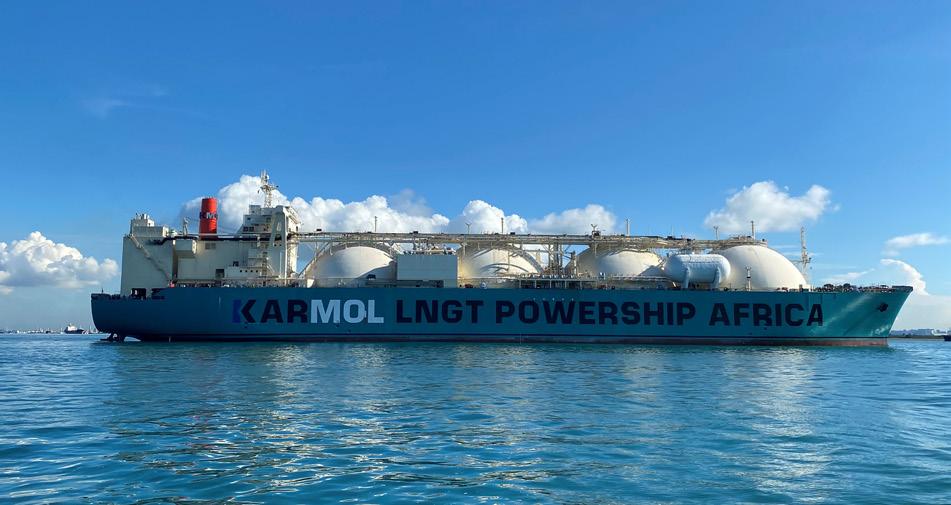
Emphasis on energy transition
LNG plays an integral role in achieving an energy transition to a decarbonised ecosystem while the limitations that are innate and associated with renewables are sorted out, such as drought, reliability, changes in weather patterns, and chemical waste pollution from batteries, among others. For example, gas-fired power plants solve the intermittent supply of renewable energy (exacerbated by climate change) that can threaten the stability of the entire power grid. Renewables thus require alternative, stable fuel capacity to support their intermittency. For most markets, natural gas is the cleanest and most commercially-preferred source of stable capacity for a power system, working hand-in-glove with renewables and complementing initiatives by governments for cleaner and greener energy. LNG is also a practical fuel with a tight specification band that can be supplied from one source and may be received in most terminals or demand centres. This enables ease of usage and mobility that effectively guarantees a country’s energy security. Furthermore, within the LNG system, there have been massive breakthroughs on accountability of how emissions are tracked, making the entire network or value chain as clean as possible.
A call for innovation
A lot of innovation that is being seen today is a direct result of limitations and learning derived from disasters (e.g. Fukushima, Japan) and geopolitical issues (e.g. Ukraine) in terms of pricing, commercial structures, and fit-for-purpose technical solutions. This is very interesting and encouraging for companies that are looking at options to bring gas into their markets efficiently and effectively. Despite having a lot of LNG exports, many of these markets are either unserved or underserved, where companies such as AG&P provide that much needed proven and commercially compelling infrastructure to support the downstream ecosystem required for clean fuel – LNG terminals, logistics, and city gas distribution networks. AG&P is one of the two known pure play integrated downstream players, where AG&P’s expertise helps terminals and downstream networks become a reality faster with economical and efficient solutions enabled by robust project development, financing, LNG supply sourcing, EPC, commissioning, and a comprehensive downstream LNG demand aggregation and supply chain and logistics solution package. These innovative solutions enable the active development of low-CAPEX LNG import terminals as gateways to new markets to access LNG and help unlock new and growing geographies in a faster and more affordable way.
No one size fits all
Each market exhibits unique market intricacies, local conditions, regulatory constraints, and customer capability and preferences.
Senegal, Indonesia, and the Philippines are fast-growing economies in Sub-Saharan Africa and Asia, embracing regasification technologies, enabling them to accelerate their transition from dirtier fuels to LNG. However, as their operating environments and user profiles are different, it requires customised and innovative solutions. Senegal has proceeded with the world’s first converted modular FSRU (M-FSRU) to power the country’s cleaner energy requirements: KARMOL is a joint venture between Turkey’s Karpowership and Japan’s Mitsui OSK Lines. The joint venture contracted AG&P’s subsidiary, Gas Entec, to convert the 125 000 m3 Moss LNG carrier into an M-FSRU. The project was completed in 10 months and within the allocated budget. The converted FSRU KARMOL LNGT Powership Africa was delivered from Sembcorp Marine in Singapore, and arrived at Senegal by the later part of 2021. The vessel was equipped with two modules of combined regasification capacity of 84 million ft3/d, and was connected to Karadeniz Powership Aysegul Sultan which enabled the 114 MW floating power plant to switch to regasified LNG by June. The overall capital outlay was less than half the cost of a new-build FSRU. Thousands of miles away from Dakar in Senegal, at one of Indonesia’s famed destinations – Bali, a new-build FSRU has embarked on its fourth year of operation. The new-build FSRU, Karunia Dewata, owned by Indonesia incorporated JSK Shipping, set sail in late 2018. This was a delivery from the Paxocean yard in China for the Benoa port in Bali, where it subsequently replaced a converted FRU, Lumbung Dewata. In the Philippines, the 5 million tpy LNG import terminal situated at Batangas Bay has adopted a different approach from the FSRU-based projects in Senegal and Indonesia. This is a hybrid concept combining an FSU and an onshore storage unit, which accommodates redundancies to mitigate disruption from frequent typhoons passing through the area.
In conclusion
As the world moves towards a net zero transition, there is a lot of pressure on emerging economies to migrate from traditional but dirtier fuels to cleaner energy alternatives. The unique conditions of each market, however, will press on the need to identify creative and innovative solutions that bridge the gap before an integrated LNG network is created in such emerging regions, or when the alternative sources of cleaner energy become accessible to all. Such streamlined solutions for creating integrated LNG infrastructures must be supported by partners that promote innovative commercial structures, customisable and flexible offering, and serve as a one-stop-shop with end-to-end energy and infrastructure construction solutions that support the full LNG value chain ecosystem. The long-term position of LNG in the energy mix of many countries, including those that aspire to have LNG as a fuel alternative, excites many as it promotes a decarbonised journey towards energy transition, reaffirms energy security and mobility from fuel sources, and remains a practical solution as a cleaner and less expensive fuel.


VACUUM JACKETED PIPE VACUUM JACKETED PIPE
WHY CHOOSE VACUUM JACKETED PIPING SYSTEMS? WHY CHOOSE VACUUM JACKETED PIPING SYSTEMS? WHY CHOOSE VACUUM JACKETED PIPING SYSTEMS?
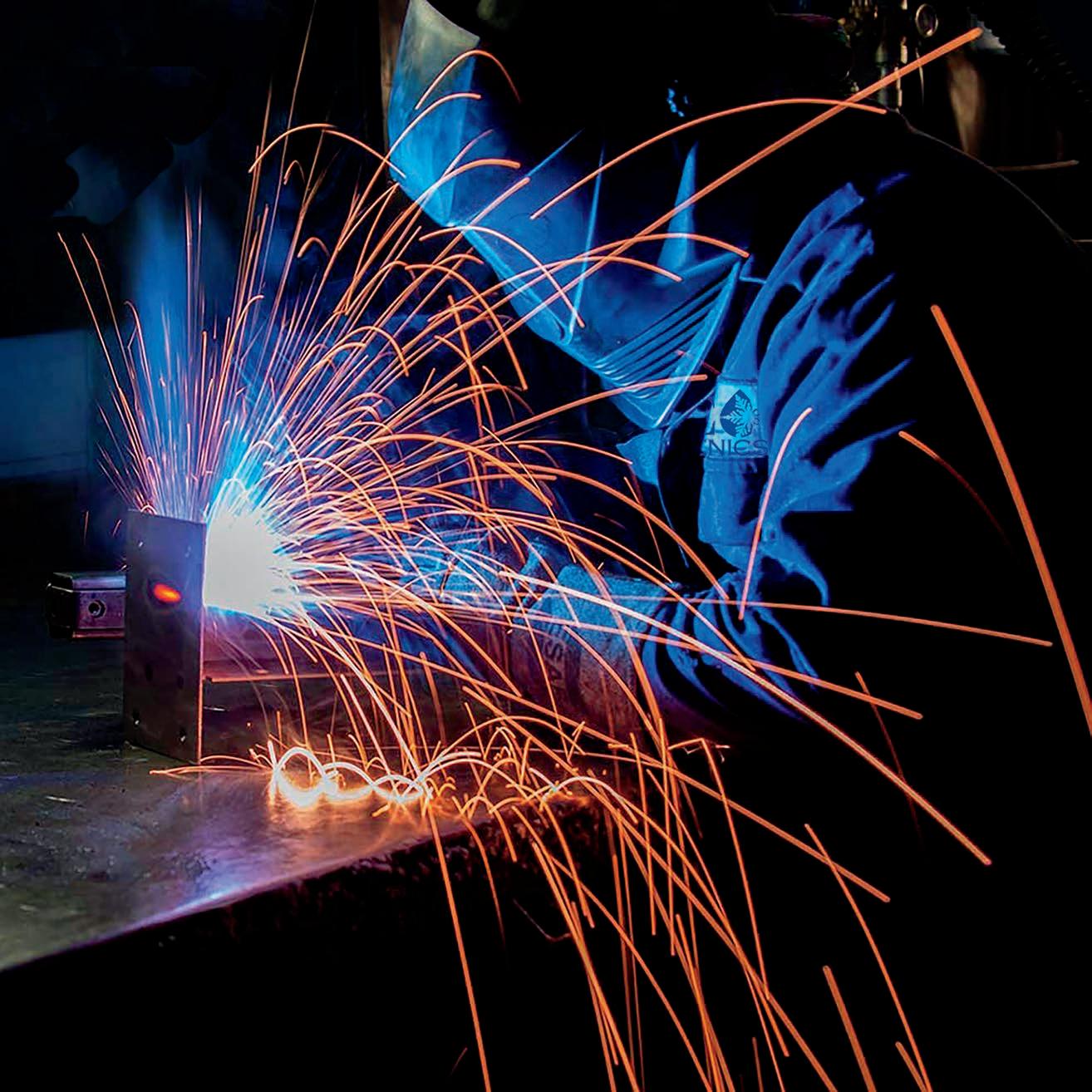
minimize Heat leaks through their innovative, efficient design minimize Heat leaks through their innovative, efficient design minimize Heat leaks through their innovative, efficient design advanced features work together to produce exceptional efficiencies across theadvanced features work together to produce exceptional efficiencies across theadvanced features work together to produce exceptional efficiencies across the entire system entire system entire system best insulation capacity while keeping your costs down best insulation capacity while keeping your costs down best insulation capacity while keeping your costs down

Figure 1.The Mount Tourmaline, the first LNG-fuelled Newcastlemax bulk carrier; owned by Eastern Pacific Shipping and Liberian flagged.
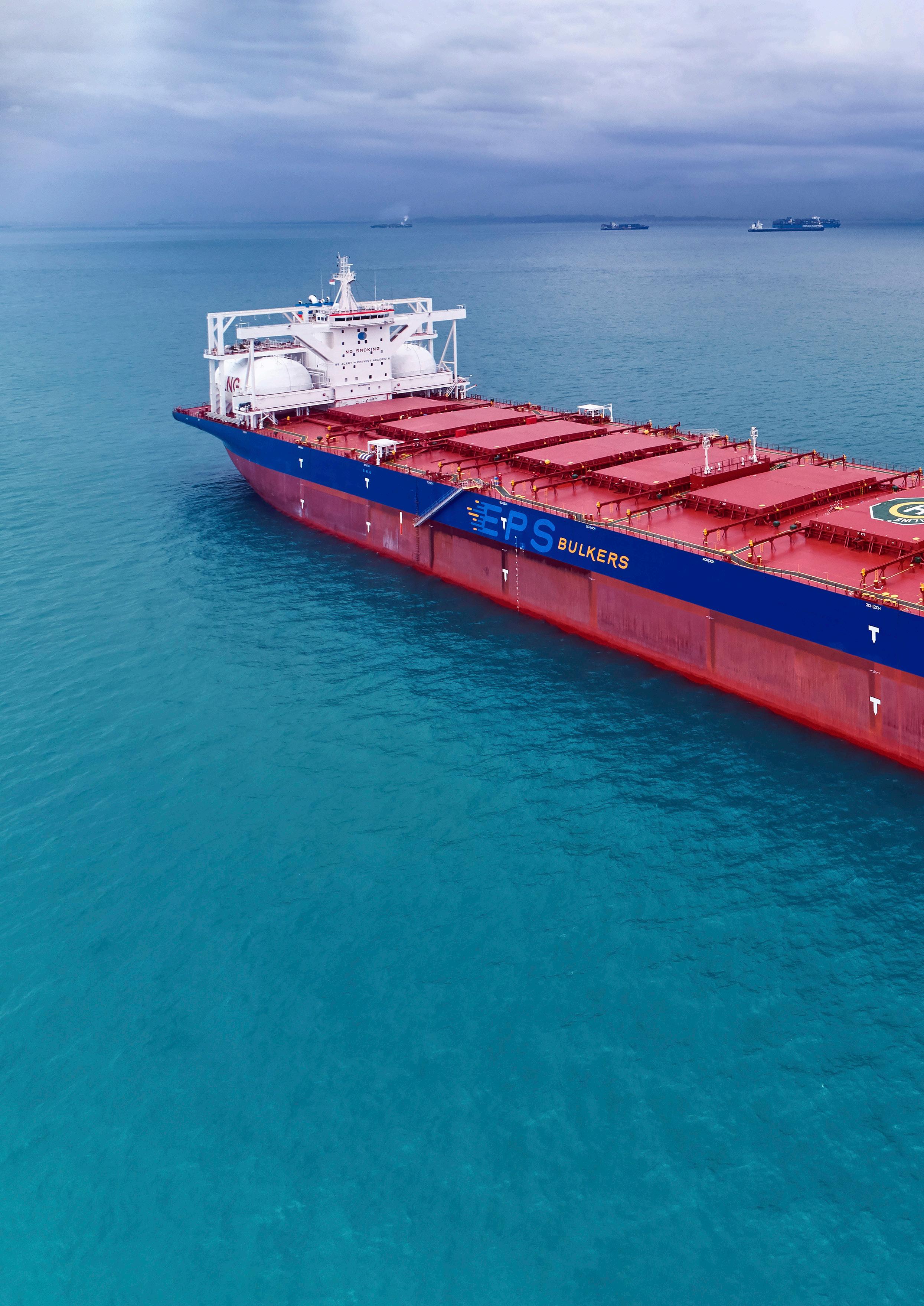
ecarbonisation is in the proverbial drivers-seat of maritime regulation and technological innovation today. The shipping industry eagerly awaits the outcome of IMO meetings on the subject; discussions around potential new regulations, requirements, and how to practically and safely implement them are discussed in great deal from boardrooms to engine rooms. At any major shipping event, industry seminar, or conference, the drumbeats of decarbonisation can be heard across almost every panel and presentation. It is no longer the word of the future, but the present. It is time to do more than talk, and the Liberian Registry is in a unique position amongst regulators of not only acting, but doing so in a proactive way that supports shipowners and operators around the world. The Registry’s global team is continuously working on new opportunities to help remove barriers to approving new technologies, design features, and alternative fuels. While the Liberian Registry is on the regulatory side of the industry, it is working closely with shipowners/operators, shipyards, design companies, classification societies, engine manufacturers, and other relevant key stakeholders to move the industry to a zero-emission sustainable future. A key part of its approach is to champion common sense, and fair, transparent regulations that allow and stimulate innovation at the International Maritime Organization (IMO). These regulations must ensure a level-playing field, and take into consideration the safety of the crews at sea, as well as their training. Chief Executive Officer of the Liberian International Ship and Corporate Registry (LISCR), Alfonso Castillero, states: “We have an obligation and desire to help our partners in the maritime industry. We do not see shipowners and operators flying the Liberian flag as clients, that is too transactional; to succeed in decarbonising the industry, we need to work in partnership. Owners are required to follow the rules and conventions we are a party to, and it is our responsibility to ensure these rules and conventions promote the safety of life at sea and the environment; a true partnership is needed to succeed here.”
Changing the regulatory framework
Over the last decade, the Liberian Registry has been consistently advocating for change to the restrictive international regulatory framework of prescriptive rules and regulations to goal-based standards (GBS) and risk assessments because it believes they provide opportunities for innovation. A GBS and risk assessment-based regulatory model allows for analysis and approval of innovative design solutions, new technologies, and alternative fuels by demonstrating an equivalent level of safety. Although the approval process may be more complicated and time consuming, it provides the much-needed opportunity for naval architects and designers to optimise the design of ships to be the most operationally and environmentally efficient. The Liberian Registry’s collaborative efforts are focused on analysing innovative ship designs featuring new technologies, alternative fuels, or advanced design features. The Registry does this through formalised joint industry projects (JIPs) or joint development projects (JDPs) with the overall goal of helping to develop the ships of the future and eventually leading the way to a truly zero-emission vessel (ZEV) that is regulatorily feasible and sustainable.
Thomas Klenum and Dallas Smith, Liberian Registry, US, look at how the maritime industry can reduce its carbon footprint, with options such as updating regulatory framework and assessing the lifecycle of fuels.
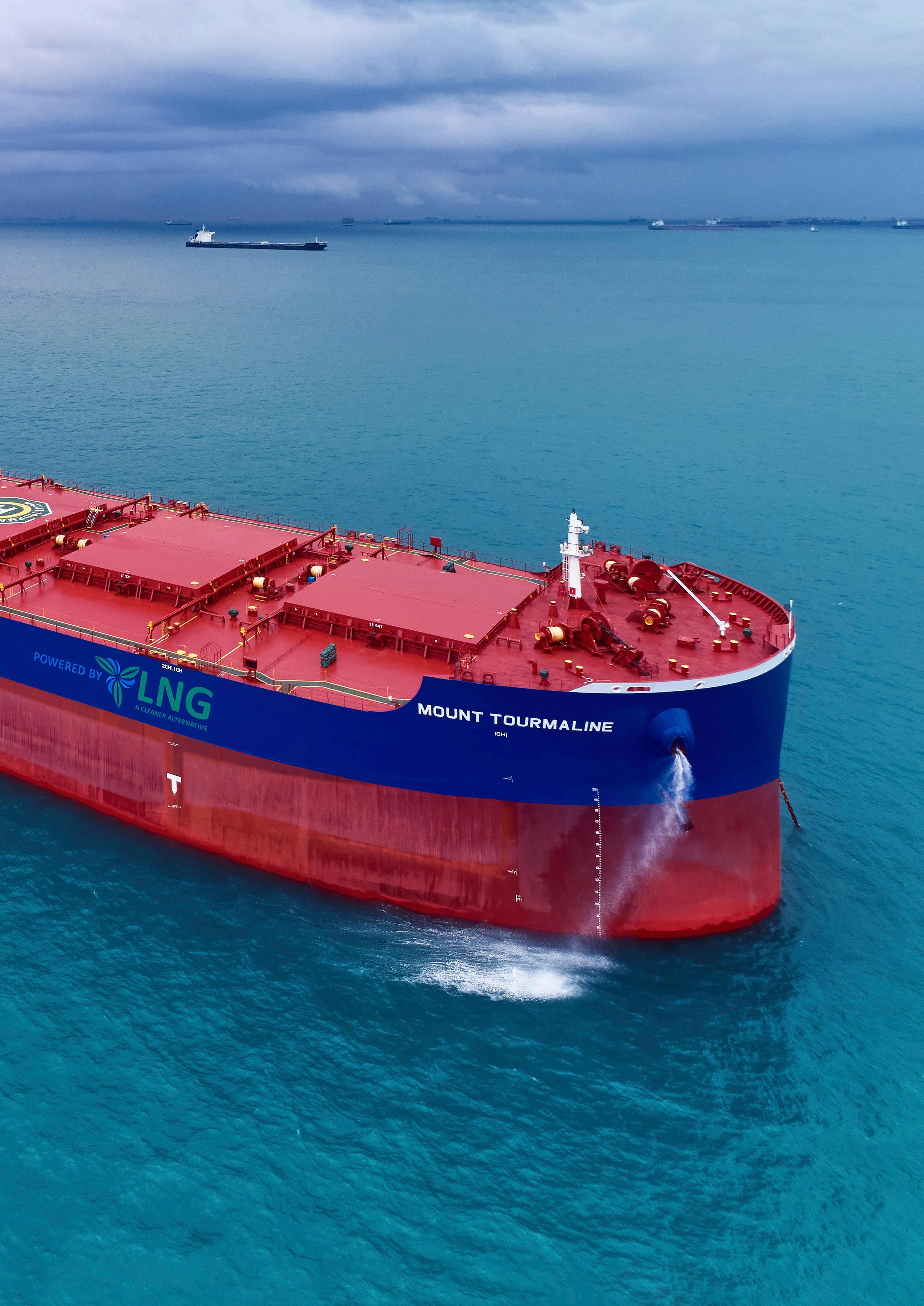
Studies have indicated that to comply with the IMO’s current greenhouse gas (GHG) emission reduction strategy, then ZEVs need to be designed, built, and in service by 2030, hence with the expected more stringent IMO strategy ZEVs should be in service before 2030. Since 2016, the Registry has participated in numerous JIPs/JDPs with over 30 projects in the last three years and interest is growing rapidly. By their very nature, these JIPs and JDPs are groundbreaking and varied, including verification of second-generation bio-fuels, CO2 carrier designs, LNG FSRUs, liquid hydrogen carriers, new materials for gas cargos and fuel tanks, as well as verifying the effectiveness of hull air lubrication systems and other design solutions. The maritime industry’s big environmental challenges ahead are related to the new IMO requirements of the Carbon Intensity Indicator (CII) and the Energy Efficiency Existing Ship Index (EEXI), along with the Energy Efficiency Design Index (EEDI) Phases 3 and 4. It should, however, be noted that these are just short-term measures from the IMO’s GHG emission reduction strategy to align the industry with the Paris Agreement’s temperature goals. It is expected that the IMO’s GHG emission reduction strategy will be revised in 2023 to require international shipping to fully decarbonise by 2050.
Considering the lifecycle of fuels
The lifecycle assessment of fuels is another interesting aspect that is currently being explored. This is on the IMO’s agenda in the context of GHG emissions reduction in order to apply a holistic solution to decarbonisation by considering the entire lifecycle of fuels. The latest effort from the IMO is to consider the complete GHG footprint of marine fuels in the regulatory framework through a well-to-wake lifecycle assessment approach. Draft guidelines for Lifecycle GHG and Carbon Intensity for Maritime Fuels (LCA Guidelines) are currently under development with the Liberian Registry’s involvement. Fuels that have been extracted, developed, and processed in a sustainable way using renewable energies can potentially be bunkered onboard a ship with a negative carbon footprint. This offers promising opportunities for biofuel blends and LNG as a fuel to play an even larger role in the transition to fully decarbonise international shipping. In fact, it could potentially be a permanent solution for ZEV if combined with the onboard carbon capture and filtering concept that is claimed to be able to capture over 90% of CO2 emissions. Therefore, considering the entire well-to-wake assessment of fuels with a 90% capture rate onboard, a ZEV could possibly be realised in the near future.
The challenge at the moment is that the new environmental requirements for EEXI and CII do not currently incorporate the lifecycle assessment of fuels and also do not give credit for onboard carbon capture and storage. The Liberian Registry is working together with other stakeholders to properly recognise and consider all emission reduction opportunities for the two new concepts. The Registry is currently preparing a document with proposed solutions to properly address this issue for possible submission to the IMO meeting MEPC 79.
Another related challenge in connection with the lifecycle assessment of fuels is that, according to the Intergovernmental Panel on Climate Change (IPCC), parts of the well-to-tank GHG emissions may not fully fall under international shipping. The accounting of GHG emissions is based on the IPCC principles laid out in the 2006 IPCC Guidelines for National Greenhouse Gas Inventories that determine which emissions are the responsibility of the international shipping sector. According to these IPCC guidelines, any non-combustion emissions, including fugitive emissions, should be accounted for in the sector(s) where the fuel is explored, produced, processed, refined, transported, or distributed. The IMO’s GHG inventory for international shipping should only include GHG emissions from fuel used by ships, whereas GHG emissions from exploring, producing, processing, refining, transporting, and distributing the fuel used by ships should be accounted for in national GHG inventories. To prevent any emissions from not being counted, IMO’s GHG inventory for the international shipping sector should estimate and report all emissions from fuel used by ships regardless of the source of the carbon. The IMO are currently developing LCA guidelines that will also address this issue in order to avoid double-counting the same emissions between IMO’s GHG inventory and national GHG inventories. It is, however, important that the IMO’s regulatory framework provides incentives to take into account the entire lifecycle assessment of fuel, i.e., well-to-wake, regardless of whether the GHG emissions are counted on the IMO’s GHG inventory or the national GHG inventories. Meanwhile, the Registry’s global team, comprised of engineers, naval architects, prior seafarers, and surveyors with experience in applying technical regulations to approval of alternative fuels and innovative designs, has been specifically tasked with supporting the Liberian fleet from the design phase through construction, delivery, and during the ship’s entire operational lifecycle. This team is in place to assist in the review of new vessel designs, offering insights and recommendations to mitigate risks/costs, advise on technical and safety implications, and support demonstration of compliance with applicable rules and regulations.
Conclusion
In considering the decarbonisation of international shipping, it should be acknowledged that international shipping transports approximately 90% of all global trade and contributes less than 3% of the global CO2 emissions; however, as part of the industry’s social responsibility and sustainability, all efforts must be made to fully decarbonise the shipping sector, and the Liberian Registry is dedicated to collaborating with other stakeholders in helping the industry Figure 2. Generic well-to-wake supply chain. Source: International Maritime Organization (IMO). have a sustainable and zero-emission future.

